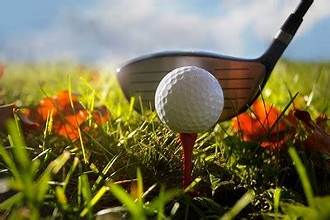Golf ball collections are much more than mere aggregates of spherical treasures; they reflect the rich history and evolution of the sport of golf. Curating such a collection involves meticulous processes to ensure each ball's authenticity, significance, and condition meet the precise standards enthusiasts expect. Whether one focuses on the technical advancements, such as the shift from the "gutty" to balls with rubber cores, or the exclusivity of rare golf balls, deliberate selection is crucial. This dedication to collecting not only preserves the past but also showcases the advancements in golf ball technology over the years.

Behind the scenes of every golf ball collection lies a systematic approach to build a core collection that resonates with both personal and historical value. Expert collectors often use extensive research and networking within the golfing community to find pieces that add depth and context to their displays. The challenge of ensuring each ball's authenticity requires a keen eye and thorough understanding of the ball's provenance. Once authenticated, items are carefully classified, preserved, and displayed in a manner that not just protects their physical state but also enhances their narrative appeal to viewers and fellow collectors.
Key Takeaways
- Golf ball collections narrate the sport's history through careful selection and authentication of each item.
- Curators employ preservation and classification to maintain the condition and contextual relevance of the collection.
- Collections often serve as a conduit for community engagement and education in the historical progression of golf.
Curating the Core Collection

Curating a core collection of golf balls involves meticulous consideration of acquisition, historical context, and performance qualities to create a valuable and informative array.
Acquisition Strategy
The acquisition of golf balls for the core collection is a deliberate process that targets rare and unique items. Each piece is carefully vetted for authenticity, ensuring that only golf balls with a recognized pedigree are introduced into the collection.
Historical Significance
Golf balls boasting a rich history are sought after for the core collection. Items often include those used in significant tournaments or by renowned players. They may also originate from pivotal moments in golf history, such as the introduction of new materials or design innovations.
Performance Characteristics
The collection prides itself on showcasing golf balls with diverse performance features. Attributes like core material, which impacts compression, and dimple design, affecting the ball's aerodynamics, are considered. These characteristics are indicative of the golf ball's performance, including the potential distance and feel of shots as described by Inside The Composition Of A Golf Ball.
Assessing Condition and Authenticity

When evaluating golf balls for a collection, the condition is paramount. Collectors will typically categorize the balls using a standardized grading system:
- Mint: No visible imperfections or marks; appears brand new.
- Near Mint: Minor imperfections, perhaps slight discoloration, but no cuts or scuffs.
- Good: Some noticeable wear, small marks or discoloration, but intact.
- Fair: Visible wear, including discoloration, scuffs, and maybe minor cuts.
- Poor: Heavy wear, with cuts and/or peeling on the cover.
Each ball is meticulously inspected by experts to determine its place within this grading scale.
For authenticity, several factors are assessed:
- Brand and Model Verification: It involves checking the ball against manufacturer catalogs to ensure it matches the design and specifications of the era.
- Logo and Markings: Authenticity is often confirmed through the examination of logos, alignment marks, and other unique identifiers.
- Provenance: If possible, the history of the ball is traced to establish its story and lineage.
Verifying authenticity may sometimes require consultation with experts and comparison against authoritative references, particularly for rare or vintage items. Through this rigorous process, collectors can assemble golf ball collections with confidence in both the condition and the authenticity of each piece.
Categorization and Classification

Curating a golf ball collection requires meticulous organization. A clear system ensures both enthusiasts and historians can appreciate the evolution and variety within the lineage of golf balls.
Age and Era
Each ball in a collection is dated to reflect its manufacturing period. Collectors typically divide these items into eras such as guttapercha, Haskell, balata, and modern. This chronological sorting provides a temporal context, allowing one to trace technological advancements and design trends.
Brand and Model
Golf balls are cataloged by brand and model, creating a reference structure for comparison. Brands like Titleist, Callaway, and Bridgestone have numerous models that vary in construction and performance characteristics such as the Pro V1, Chrome Soft, and Tour B series, respectively. This level of detail aids in understanding the diversity among manufacturers.
Tour Use and Provenance
Provenance adds significant value to a golf ball. Items are classified based on their usage in professional tours or any notable associations with professional golfers. For instance, a Titleist Pro V1 used by Tiger Woods in a major championship would be a key highlight. Documentation and authenticity are paramount in this subsection.
Display and Preservation Techniques

Curating a golf ball collection involves meticulous display and preservation techniques to maintain the integrity of the items. The methods employed ensure that golf balls, some being historic pieces, are exhibited in a manner that protects their condition and historical value.
Environmental Control:
- Humidity and Temperature: It is essential to maintain a controlled environment with stable humidity and temperature levels to prevent decomposition or warping of the golf balls.
- Light Exposure: Minimize exposure to direct sunlight and use UV-filtering glass for display cases to reduce fading and material degradation.
Mounting and Display:
- Supports: Use acid-free, inert materials like Mylar or polystyrene mounts that do not chemically interact with the golf balls.
- Spacing: Display golf balls with ample space between each to prevent contact and abrasion.
Handling and Cleaning:
- Gloves: Always handle golf balls with clean, white cotton gloves to avoid contaminating the surface.
- Gentle Cleaning: Regular, light dusting with a soft, microfiber cloth is preferred. Detergents and solvents should be avoided.
Documentation:
- Labels: Clearly label each ball with details of its provenance and significance.
- Cataloging: Maintain a detailed digital record of the collection for both insurance and historical purposes.
For those interested in learning more about the challenges and rewards of collecting rare golf balls, from peculiarities such as "featheries" to game-changing designs, consider exploring further resources on collecting golf balls and their historical significance.
Themed Collections

In the world of golf ball collecting, themed collections offer a focused lens through which enthusiasts can appreciate the game's rich history. Each theme serves to commemorate significant aspects of golf, from storied championships to legendary players.
Major Championships
Major Championships are the crown jewels of golf. Collectors often seek out balls featuring logos from the Masters, U.S. Open, The Open Championship, and the PGA Championship. These collections not only celebrate the game's most prestigious events but also capture moments of triumph and the legacy of the sport.
- Masters: Known for its iconic green and yellow logo.
- U.S. Open: Often features the USGA logo and the year it was held.
- The Open Championship: Distinguished by the venerable Claret Jug symbol.
- PGA Championship: Balls are embellished with the distinct PGA logo.
Iconic Tournaments
Iconic Tournaments hold a special place in golf history and the hearts of collectors. Balls from the Ryder Cup or the Presidents Cup are just a couple of examples that narrate the international aspect of the game, emphasizing camaraderie and competition across nations.
- Ryder Cup: Emblazoned with the Ryder Cup insignia, representing transatlantic golf rivalry.
- Presidents Cup: Features the cup's emblem, symbolizing global golfing unity.
Signature Players
Signature Players collections focus on golf balls linked to legendary figures in the sport. Balls from this theme may bear the autographs, logos, or personalized markings of greats such as Tiger Woods, Jack Nicklaus, or Arnold Palmer. Collecting these is akin to holding a piece of the player's legacy.
- Tiger Woods: Often found with his "TW" monogram.
- Jack Nicklaus: May showcase his "Golden Bear" logo.
- Arnold Palmer: Recognizable by the iconic umbrella logo.
Community Engagement and Outreach

Engaging with the community is an integrated aspect of curating a golf ball collection. The collection aims to connect with enthusiasts and the public through interactive exhibits, educational programs, and the inclusion of member contributions.
Interactive Exhibits
Interactive exhibits are a core feature that allows visitors to experience the history and diversity of golf balls. They can physically handle different balls, observe the evolution of design, and learn about the manufacturing process. For instance, visitors might find touchscreens that explain the significance of dimple patterns on a golf ball's performance.
Educational Programs
Educational programs serve to inform participants about the science and history behind golf balls. These programs may include workshops, lectures, and seminars led by golf historians and industry experts. Schools and community groups are often invited to these sessions to foster a deeper understanding of golf's impact on culture and sports technology.
Member Contributions
Member contributions involve sourcing stories and artifacts from local golfers and club members. Personal anecdotes or rare golf balls donated by members enrich the collection and offer a unique, personalized touch to the exhibits. This practice helps build a sense of ownership and pride within the golfing community.
Digitization and Online Cataloging
In the realm of curating golf ball collections, digitization plays a crucial role. Museums and collectors now digitize golf balls to create a virtual catalog that is both accessible online and easy to navigate. This process involves high-resolution photography, ensuring every dimple and marking is visible, capturing the golf ball's unique characteristics.
Once the images are captured, the next step involves meticulous cataloging. Each golf ball is paired with an accurate description, including its history, manufacturer, and any significant events associated with it. For example, a ball used in a major tournament might include information about the game and the player who used it.
The metadata created, such as its size, weight, and materials, are critical for researchers and enthusiasts alike to understand the golf ball's provenance and place in history. Effective practices in digitization have been demonstrated by institutions like the Smithsonian Institution Archives, stressing the importance of multiple steps, including image processing and quality assurance.
The final step is the upload of this information to digital asset management systems where they are preserved and made publicly accessible. Through these steps, the digital catalog provides invaluable data and images to a global audience, increasing the discoverability of these historical artifacts while preserving their physical counterparts from frequent handling and potential damage.
| Step | Description |
|---|---|
| Photography | Capture detailed images of each golf ball. |
| Cataloging | Record the history and data associated with each ball. |
| Metadata Creation | Document specific details for research and reference. |
| Quality Assurance | Ensure accuracy and consistency in digitized collections. |
| Online Accessibility | Make collections available to global audience. |
Each phase of this process is essential to create a reliable and comprehensive online catalog.
Behind-the-Scenes Operations
In the careful curation of golf ball collections, rigorous behind-the-scenes operations are essential. These operations ensure each golf ball's integrity and the collection's overall value.
Storage and Security
Secure, climate-controlled environments are paramount in preserving the golf ball collection's quality. Storage solutions include locked cabinets and safes, with access controls limiting entry to authorized personnel only. State-of-the-art security systems, comprising surveillance cameras and motion detectors, safeguard the collection from potential threats.
Condition Monitoring
The collection's condition is regularly assessed through a meticulous inspection process. Each golf ball is cataloged in a digital database, detailing its make, model, and historical significance. Humidity and temperature levels are constantly monitored, as fluctuations can affect the items' condition over time.
Staff and Expert Involvement
Specialist staff and experts play a critical role in managing the collection. Their responsibilities encompass cataloging new acquisitions, conducting research, and ensuring the authenticity of each piece. They stay abreast of market trends and advances in preservation techniques to maintain the collection's standing.
Frequently Asked Questions
This section addresses common inquiries regarding the meticulous process involved in curating golf ball collections, specific criteria for valuation, and preservation techniques.
How are golf balls selected for inclusion in curated collections?
Golf balls are chosen based on various factors, including rarity, brand heritage, and historical significance. Each ball undergoes a thorough examination process, ensuring that it meets the stringent standards of collectors.
What criteria determine the value of a golf ball in a collection?
The value of a golf ball within a collection is determined by its age, condition, scarcity, and any association with significant golfing events or players. Provenance and originality also play crucial roles in establishing its worth.
What are the best practices for maintaining the condition of golf balls in a collection?
To preserve the condition of golf balls, it is essential to store them in a controlled environment, away from direct sunlight and fluctuating temperatures. They should also be handled with care to prevent scratches or damage to their surfaces.
How is the authenticity of a collectible golf ball verified?
Authenticity verification involves rigorous inspection of the golf ball's characteristics, comparing it to authenticated exemplars or manufacturer specifications. Documentation or certification from reputable sources may also support its authenticity.
What restoration processes are used on vintage or rare golf balls?
Professional restorers employ non-invasive techniques to clean and stabilize vintage balls, taking care not to alter any original features. Restoration aims to preserve the integrity and original appearance of the golf ball.
What innovative methods are collections implementing for golf ball retrieval?
Collections are increasingly using advanced techniques, such as metal detectors and underwater drones, in the retrieval of lost or hidden golf balls. These methods allow collectors to uncover golf balls from challenging locations without causing undue harm to the environment.
 from Over 100,000 Reviews
from Over 100,000 Reviews




